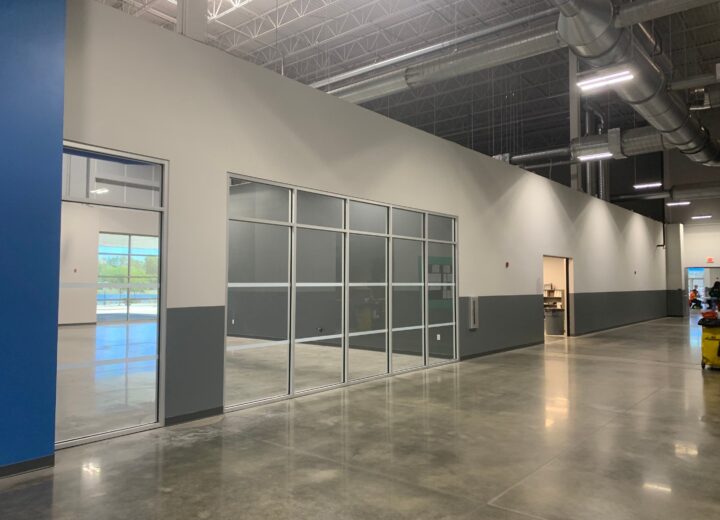 Fresh coatings are an important way you can go above and beyond for your team and the public you serve. Coatings are a crucial part of an overall strategy to create a safe, healthy environment.
Fresh coatings are an important way you can go above and beyond for your team and the public you serve. Coatings are a crucial part of an overall strategy to create a safe, healthy environment.
You already know that coatings have the capability to protect your exteriors and interiors from environmental stressors. Rust, salt attack, and moisture intrusion are just a few of the ongoing facilities issues that fresh coatings can help you defend against.
An appropriate coating strategy for your company adds value in multiple ways:
- You can extend the life of treated substrates and building systems that rely on them
- You can ensure longer periods of superior aesthetics with lower maintenance needs
- You can help protect the health of people who work in and rely upon your facilities
At the moment, a lot of attention is being paid to that last element. It’s crucial to realize that you don’t have to sacrifice either of the first two factors in order to safeguard health with fresh coatings.
Your Building Can Harbor Bacterial Contaminants That May Harm Your Health
These days, more people are alert to the risk of contamination from large groups and long hours spent in close quarters. The vast majority of workplace-related illnesses, however, come from a very small set of common pathogens that don’t receive much attention.
The spread of pathogens inside of a commercial building is aided by inefficiencies in the HVAC system. The older a building is, the more likely it is that it has narrow ductwork and vents that are prone to clogging. Pathogens can effectively get trapped inside buildings.
It’s exactly because of this that indoor air can be far more polluted than the air outside.
When you are stuck indoors in a building that has air quality problems, you can leave yourself exposed to a variety of illnesses. People with underlying conditions are at special risk. This impacts performance and can leave you short-handed as staff members call out.
Coatings enable you to control the problem by hindering the spread of contaminants and, in some cases, reducing the concentration of contaminants on the treated substrates. It is not just passive protection, but active resistance against the most significant health threats in most workplaces.
Microbicidal Coatings Protect Your Business from Common Workplace Ailments
Anti-microbial coatings that make the spread of bacteria less likely have been around for many years. In fact, they are already common at hospitals, clinics, senior centers, and even in schools.
Over the last few years, coating science has seen a leap forward. True microbicidal coatings are now available. These coatings are proven to actively kill certain bacteria on the coated surface.
The biggest to hit the industry is Sherwin-Williams Paint Shield.
Paint Shield was subjected to rigorous laboratory testing to meet Food and Drug Administration standards. By passing those tests, Sherwin-Williams is able to make health claims no other brand can make about its product’s unique ability to protect your company.
As a true microbicidal paint, Paint Shield can destroy 99.9% of certain bacteria:
- Staph
- E. coli
- MRSA
- VRE
- Enterobacter aerogenes
Notably, MRSA is one of the most common bacteria involved in hospital-acquired infections. HAIs are a huge threat in high-volume healthcare environments, including virtually all hospitals. The suitability of Paint Shield in this situation is one clue to just how valuable it can be.
Most companies, especially those that deal with food preparation and service, are at much greater risk from food poisoning through E. coli infection. E. coli can proliferate very rapidly when there are problems maintaining appropriate refrigeration and food handling for even a few minutes.
Another problem with E. coli is the fact that a very small amount can lead to infection. Beef, milk, and produce are all potential vectors of disease. If your business manages any of these food items, then microbicidal coatings should make up one line of defense for your customers.
Staph infection is another potential cause of food poisoning. Like E. coli, it can lead to nausea, vomiting, and diarrhea. It sometimes does serious systemic damage to the body. Cleaning and disinfecting work areas can help control it, but may not be perfect.
Staph can transfer from one person to another if an employee comes to work sick. People with Staph infections may have limited noticeable symptoms, including rashes or boils – they do not always know there is a problem. The right coatings protect everyone at work.
Microbicidal Coatings Are a Powerful Add-On to Productive Workplace Policies
A fresh microbicidal coating can be trusted to destroy 99.9% of target bacteria for up to two years as long as surface integrity is maintained. Combined with rigorous workplace health standards, including the right resources for personnel to stay home when sick, you can curb work-related infections, improve attendance, and keep efficiency and morale high.






